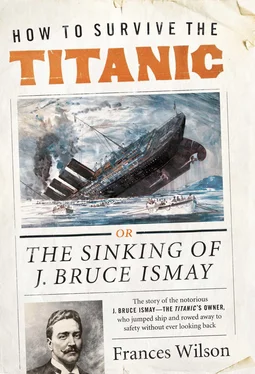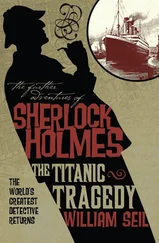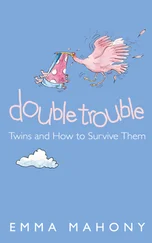Ismay told the inquiry that following the collision Captain Smith gave no report as to the extent of the damage and, as far as he was aware, raised no alarm. The information Ismay received — that the ship had thirty-five or forty minutes to live — came from Joseph Bell, the Chief Engineer, after he had seen the Captain on the bridge. However, Ismay stressed that Captain Smith was a man with a very very clear record. I should think very few commanders crossing the Atlantic have as good a record as Captain Smith had, until he had the unfortunate incident with the Hawke. Had the Olympic ’s earlier collision with HMS Hawke shaken Ismay’s confidence in the Captain? He replied that it had not and that he had no reason to doubt that Captain Smith had quite got over the mishap. As to when the Captain gave Ismay the Marconigram from the Baltic, he stated I do not know whether it was in the afternoon or immediately before lunch; I am not certain. I did not pay any particular attention. How did it happen that the Titanic had only twenty lifeboats? That was a matter for the builders, sir, and I presume that they were fulfilling all the requirements of the Board of Trade. Ismay agreed that the Board of Trade requirements were out of date, but when asked to confirm whether ‘the davits they had on the Titanic were capable of handling three boats instead of one and that there was no question about those davits being able to handle twice the number of boats they did handle’, Ismay refused to answer. I could not express an opinion in regard to that. I do not know anything about it. As to whether the lesson of the Titanic showed that it was ‘impossible to construct a non-sinkable ship’, he said that he would not like to say that, because I have not sufficient knowledge. This time when Ismay was asked whether his lifeboat was filled to its capacity, he replied that it was not, that the full capacity of one of those boats is about sixty to sixty-five. Who told him to enter that lifeboat? No one, sir. Why did he enter it? Because there was room in the boat. She was being lowered away. I felt the ship was going down, and I got into the boat.
Ismay was released and there were expressions of courtesy all around. Should he be needed by Senator Smith in the near future, he would be quite glad to come back from the other side. In the audience that day had been John Galsworthy. ‘A queer, jumbled business,’ Galsworthy wrote in his diary. ‘We heard the unfortunate Ismay give his evidence very quietly and well. The system and public is to blame for the miserable calamity; and of course the same public is all agog to fix the blame on some unhappy shoulders.’ Now that the inquiry was drawing to a close, the life of the city was resuming. ‘To the Trovatore at the Opera,’ Galsworthy continued. ‘Phew! What a rococo!’ Unable to return on the Titanic as planned, Galsworthy sailed to England five days later on the White Star liner the Baltic, whose ice warning Ismay had carried around in his pocket all day. ‘Reading; Talking; Eating; Sleeping,’ he wrote of the voyage back. ‘Nothing eventful happened.’ 24
Ismay caught the train to New York, ignoring summonses issued by the District Supreme Court to testify in an action brought by Mrs Louise Robins, the widow of John Jacob Astor’s valet. When Ismay did not appear, the hearing was abandoned.
Senator Smith too returned to New York where, at the Waldorf-Astoria, he took affidavits from various survivors including August Weikman, the Titanic ’s barber, who was probably the source of Lightoller’s story that Ismay had been ‘ordered’ by the officer in charge into ‘the last boat to leave’. Ismay’s actions were justified, Weikman swore, because ‘there were no women in the vicinity’. Mrs Malaha Douglas, travelling first-class, claimed that on the afternoon of the accident she and her now-deceased husband had seen a seaman take the temperature of the water not by lowering a pail down the side of the ship, but by filling the pail with water from a tap and then placing his thermometer inside. Mrs Douglas also claimed that Ismay had been at the Wideners’ dinner party that night, and repeated the story told by Emily Ryerson of his showing an ice warning to Mrs Ryerson and Mrs Thayer that afternoon, before announcing that they would deal with the problem by lighting more boilers.
Emily Ryerson then arrived to give her affidavit. Smith’s key witness described her last hours on the ship but said nothing about the now famous encounter with Ismay. Why she held back would be clearer to Ismay than it was to Smith, but she doubtless said that it was to avoid additional stress. Mrs Ryerson, who had been returning on the Titanic for the funeral of her eldest son, was now also burying her husband. If Lightoller, who tried to prevent her thirteen-year-old boy from boarding the lifeboat, had had his way, both her sons would now be dead. Getting tangled up in what Ismay did or didn’t say about speed was more than she could bear this week. Marian Thayer, who had been with Mrs Ryerson during the encounter, had said nothing whatever about it. She was caught between loyalty to an old friend and a new one.
On 2 May, Ismay left for England on board the Adriatic. He was, he told a British journalist, ‘worn out. I am feeling very tired and wish to retire.’ The previous day, the funeral of John Jacob Astor had been knocked off the front pages by the appearance of 15,000 suffragettes parading through New York.
The Senate’s report of its findings was published on 28 May. It seemed that for all his support of the ‘little man’, Smith was uninterested in the part played by class on the Titanic. He saw the conflict as between good men and bad, rather than rich men and poor. Smith duly noted that 60 per cent of first-class, 42 per cent of second-class and 25 per cent of third-class passengers were saved, but he questioned only three steerage passengers, each of whom assured him that those in third-class had not been trapped in the ship’s bowels.
William Alden Smith’s aim, ‘plain and simple’, had been ‘to gather facts relating to this disaster while they were still vivid realities’. The facts he gathered were these: that the Titanic was fitted with davits that could hold forty-eight lifeboats but which were carrying only sixteen (the number approved by the British Board of Trade); that the lads in the crow’s nest were not provided with binoculars; that while the Captain was at a private dinner party made up of East Coast millionaires the ship was steaming at 22 knots — her maximum speed of the voyage — into an ice field which he had been warned about by Marconigram on many separate occasions; that after the collision the Titanic continued to go forward for thirty-five minutes; that the Captain failed to inform his passengers and crew that the ship was sinking; that he gave no instructions as to the handling and manning of the lifeboats, and there was no order to abandon ship. The single fact that Senator Smith had not been able to ascertain, despite repeatedly asking him, was one that his star witness himself was hardly able to understand: why had Ismay jumped?
The language William Alden Smith used in his report to describe these facts was neither ‘plain’ nor ‘simple’; he was writing a florid page of history. Six weeks after its loss, with the mariners still wet, the Titanic had become an historical document. Senator Smith had gathered together myriad witness accounts, all of them partial, some false, and allowed them to interface, interlace and interfere. He had thus given the chaos of the night a start, a middle and an end. There was a beauty to the process of reconstruction, and the romance of his role was not lost on him. The Senator concluded that ‘the willingness’ of Captain Smith ‘to die was the expiating evidence of his fitness to live… In his horrible dismay, when his brain was afire with honest retribution, we can still see, in his manly bearing and his tender solicitude for the safety of women and little children, some traces of his lofty spirit when dark clouds lowered all about him and angry elements stripped him of his command.’ He spoke of the ‘bosom’ of the ocean, the ‘glamour of the sea’, and ‘the daring spirit of the explorer and the trader’ whose noble ‘calling’ was ‘already demoralised and decadent’.
Читать дальше












